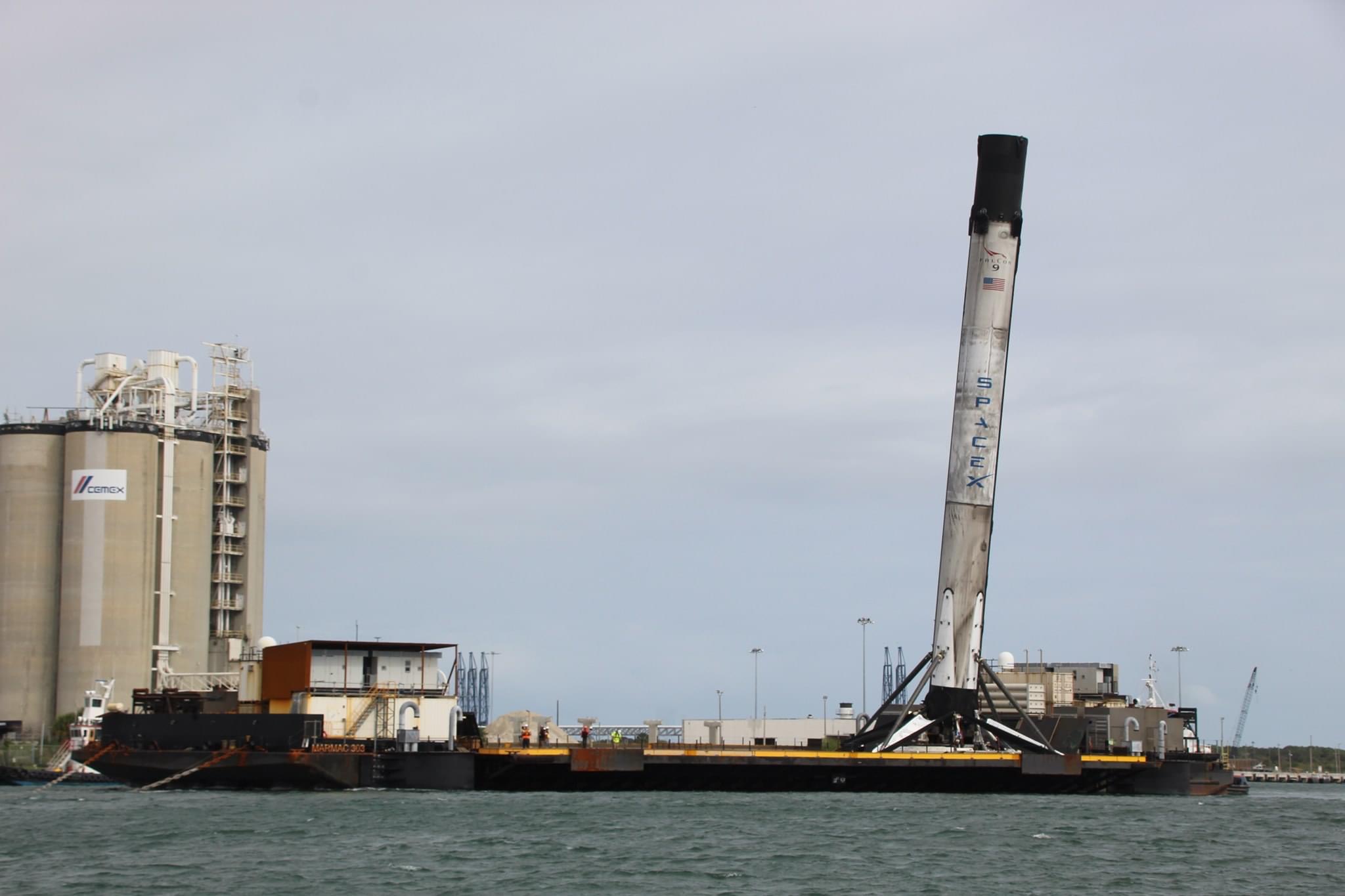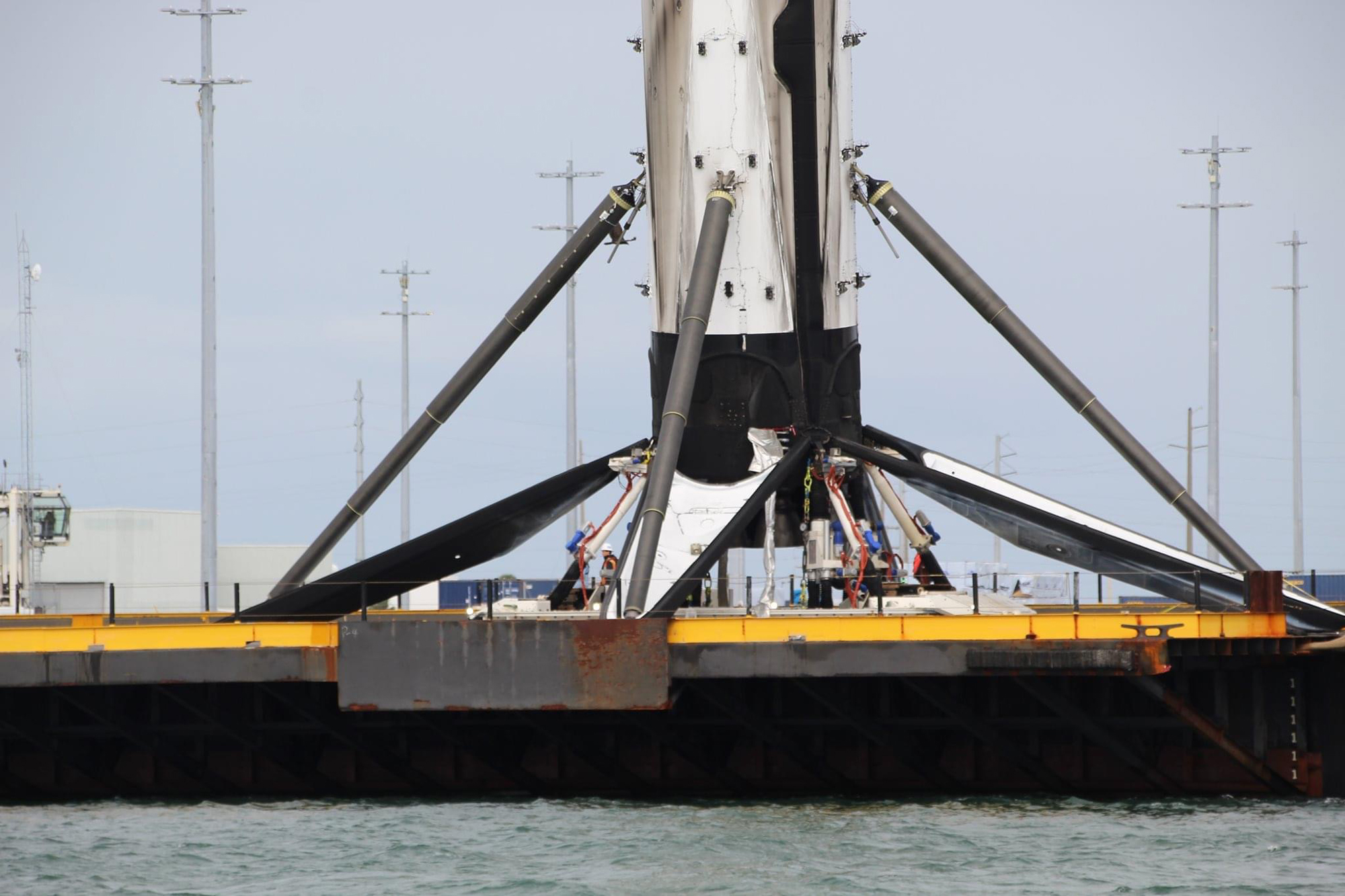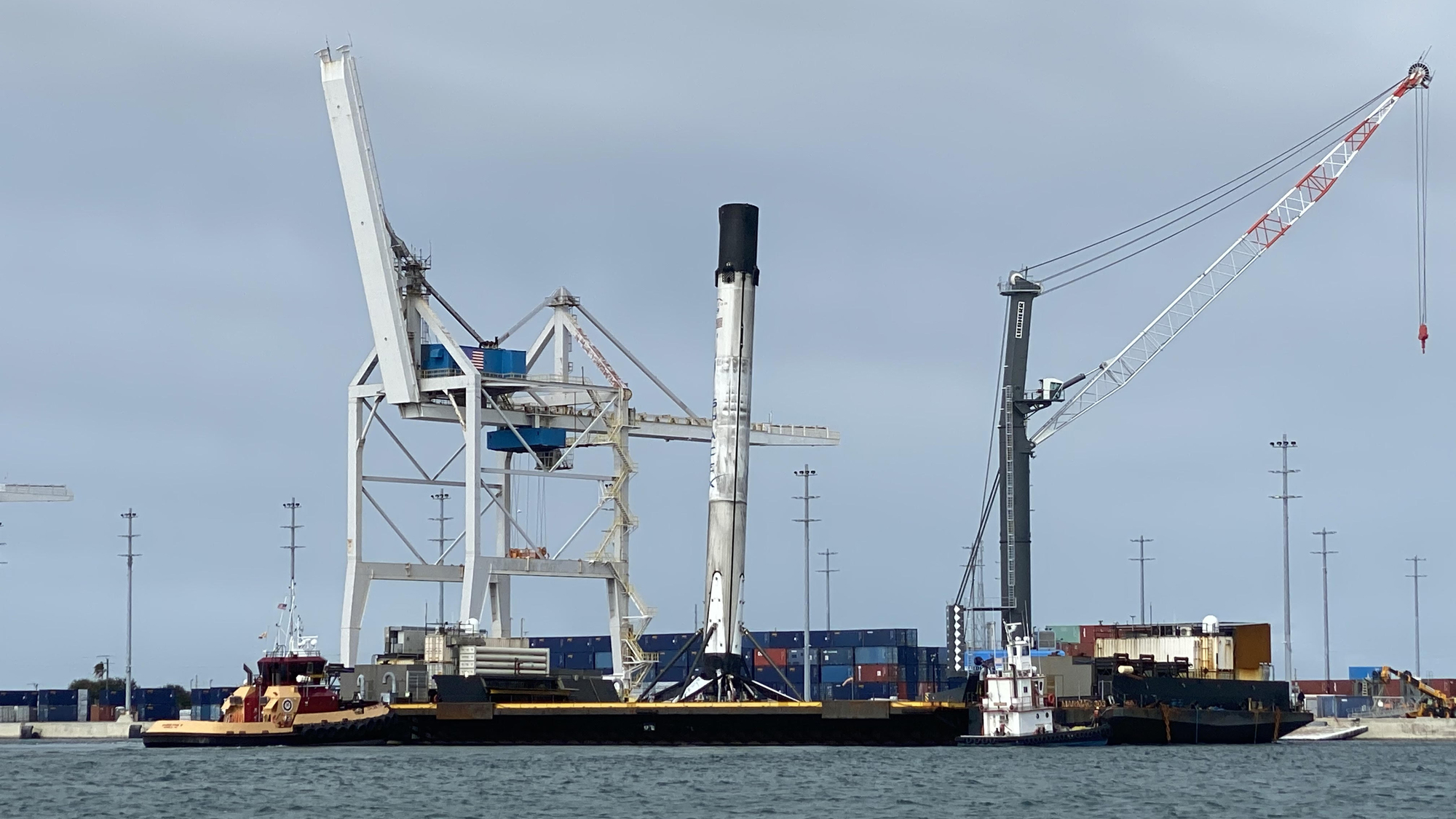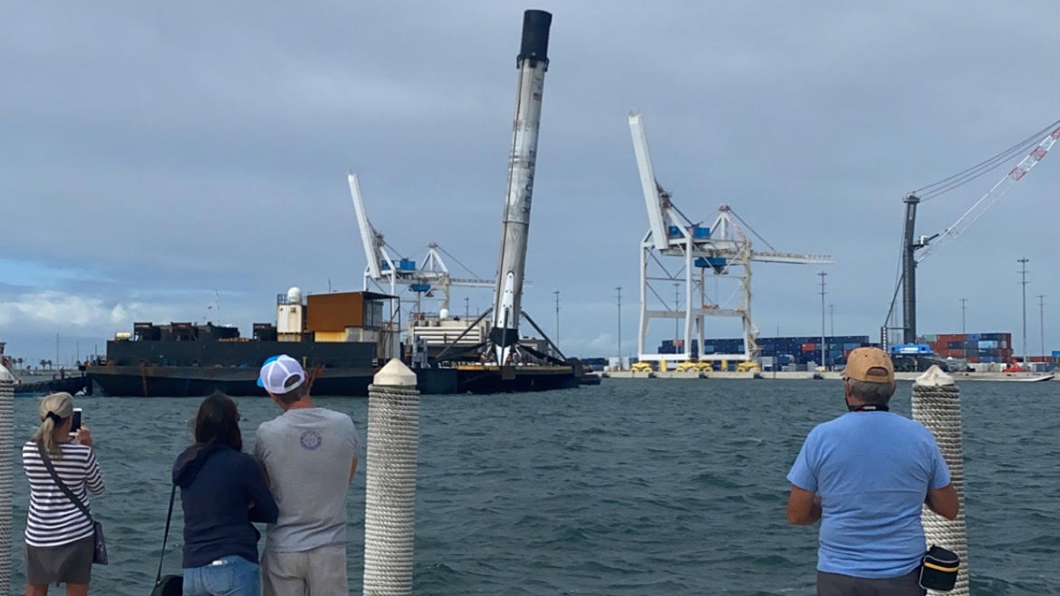In photos: SpaceX's leaning Crew-1 Falcon 9 booster returns to port

CAPE CANAVERAL, Fla. — What just might be the sootiest SpaceX Falcon 9 booster yet has returned to shore here at Port Canaveral after nailing a record-setting eighth launch and landing last week. But do you remember the "drunkest" Falcon 9 booster, which came home looking pretty tipsy after a windy ride to shore?
SpaceX F9 B1051.8 came back to Port Canaveral from its 8th launch, deployment & landing of the 17th #Starlink mission. I love the character of the missions on the booster but I have to admit this is by far the dirtiest (Sooty) in history. #SpaceX #SpaceXFleet #NASA @elonmusk pic.twitter.com/82cD6i2h7RJanuary 24, 2021
SpaceX's historic Crew-1 booster sailed back into port looking like the Leaning Tower of Pisa on Nov. 19, 2020, after successfully delivering four astronauts into space just days before.
The Crew-1 booster, known as B1061 by SpaceX, appeared to be in good shape after sliding around on the deck of the company's drone ship "Just Read the Instructions," which was subjected to high winds and rough seas on the way back to port after the Falcon 9 landed on it the Atlantic Ocean.
Despite being secured to the deck of the massive ship by a small robot called an "octagrabber," the booster was leaning slightly as it made its way back to port.
Related: See the evolution of SpaceX's rockets in pictures



Assuming everything goes as planned and the booster passes post-flight inspections with no major issues, SpaceX plans to reuse the booster to launch the next Crew Dragon mission to the International Space Station, Crew-2, which is scheduled to lift off sometime in the spring. That flight will mark the first SpaceX crew mission to fly with both a reused Falcon 9 booster and Dragon crew capsule. (NASA previously announced it gave SpaceX the go ahead to reuse hardware for Crew missions.)
The brand new booster blasted off from NASA's Kennedy Space Center on Nov. 15 and then landed on "Just Read the Instructions" around 9.5 minutes later. Live video of the landing, as captured by the massive vessel, appeared to show the Falcon 9's first stage touching down squarely on the ship's deck, which was stationed in the Atlantic Ocean more than 300 miles (500 kilometers) northeast of Cape Canaveral.
Get the Space.com Newsletter
Breaking space news, the latest updates on rocket launches, skywatching events and more!
But by the time the rocket arrived at Port Canaveral four days later, the booster had a noticeable lean and one of its four landing legs appeared to be hanging off the edge of the ship's deck, while another landing leg looked to be raised off the deck.
SpaceX has already offloaded the booster and will transport it back to the company's facilities at Cape Canaveral Space Force station. It will undergo a thorough inspection process before it's put back into the rotation again.
Related: SpaceX's Crew-1 astronaut mission in photos
The company has leaned hard on its fleet of flight proven boosters this year, which has enabled SpaceX to get more than 20 missions off the ground this year. NASA recently said it would allow SpaceX to use flight proven boosters to ferry its astronauts to space, starting with the Crew-2 mission.
That flight could lift off as early as March, and the agency announced it would do so on the same booster as Crew-1. That means that NASA really hopes B1061 will be able to fly again. There is no visible indication that the booster's lean would affect its ability to be reused for the Crew-2 mission, but it still has to go through the inspection process to be sure.
NASA has other options available if necessary as SpaceX has a fleet of veteran rockets to choose from, including the booster that launched the Sentinel-6 Earth-observing satellite for NASA on Nov. 21. That launch iblasted off from Vandenberg Air Force Base in California. Just as planned, the booster touched down back on land approximately nine minutes later.
Follow Amy Thompson on Twitter @astrogingersnap. Follow us on Twitter @Spacedotcom or Facebook.
Join our Space Forums to keep talking space on the latest missions, night sky and more! And if you have a news tip, correction or comment, let us know at: community@space.com.

Amy Thompson is a Florida-based space and science journalist, who joined Space.com as a contributing writer in 2015. She's passionate about all things space and is a huge science and science-fiction geek. Star Wars is her favorite fandom, with that sassy little droid, R2D2 being her favorite. She studied science at the University of Florida, earning a degree in microbiology. Her work has also been published in Newsweek, VICE, Smithsonian, and many more. Now she chases rockets, writing about launches, commercial space, space station science, and everything in between.









